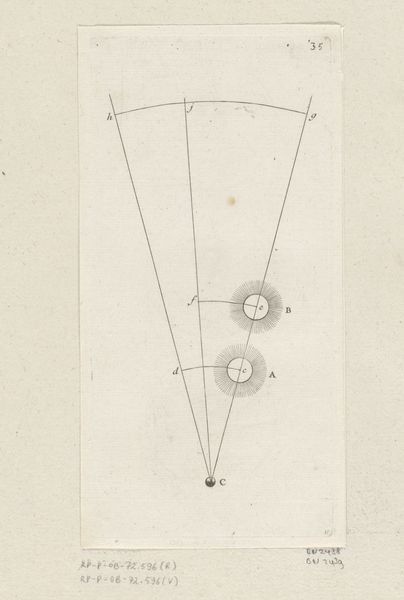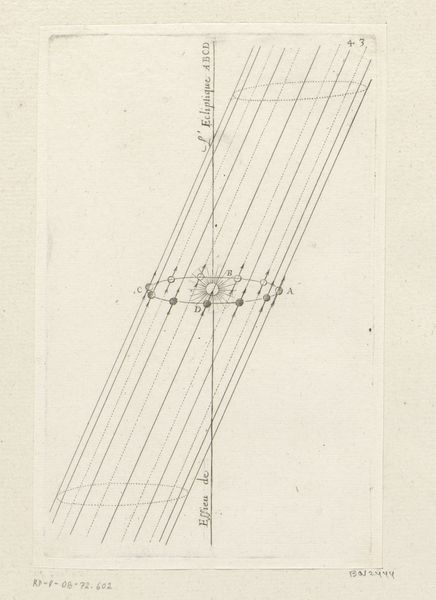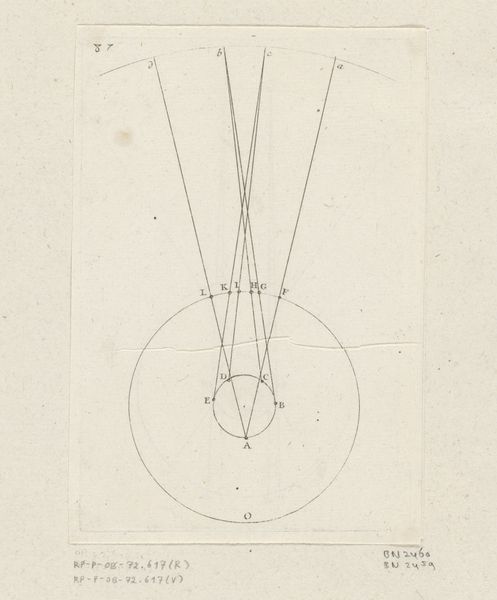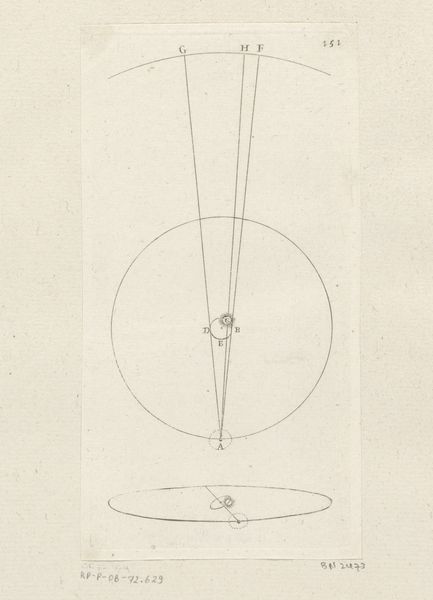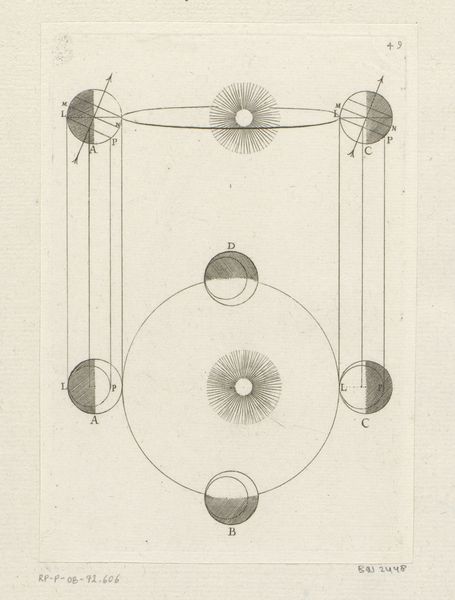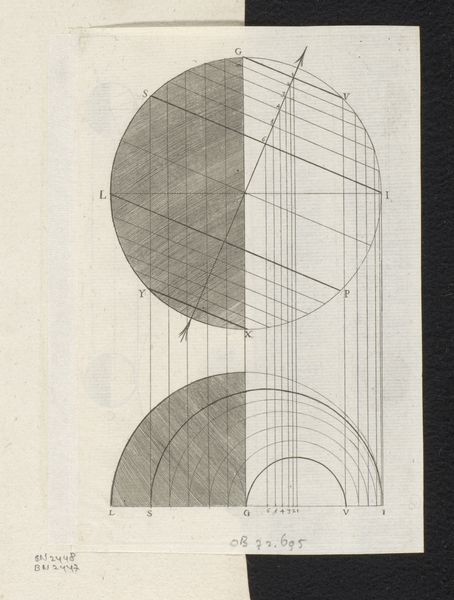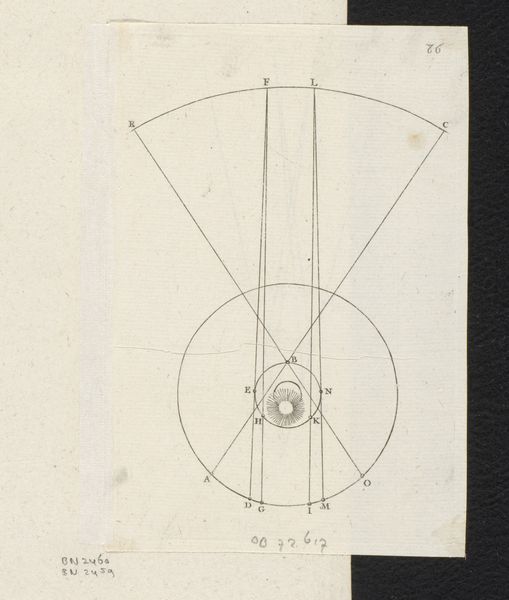
drawing, print, engraving
#
drawing
#
baroque
# print
#
old engraving style
#
landscape
#
geometric
#
history-painting
#
academic-art
#
engraving
Dimensions: height 173 mm, width 107 mm
Copyright: Rijks Museum: Open Domain
Editor: Here we have Sèbastien Leclerc I's "Helling van de Aarde ten opzichte van de ecliptica," created in 1706. It's an engraving, and what immediately strikes me is the precision of the lines. It feels almost like a blueprint, cold and calculating. What was the purpose behind such meticulous detail? Curator: Look closely at the lines, the paper. This wasn't produced in isolation. The printing press, the skilled labor of the engraver, and the networks for distributing these images were all crucial. This print serves as more than just an illustration of astronomical concepts. How might the relatively wide dissemination of information impact power structures? Editor: So you're saying the materials themselves, the print medium, enabled a broader reach for these ideas and could alter the role of traditional centers of knowledge? Curator: Precisely. Engravings allowed complex diagrams like this to be replicated and shared more widely than handwritten manuscripts. Think about the skilled artisans required. This wasn't just Leclerc working alone; it involved workshops, apprentices, and established techniques. This diagram reflects both specialized labor and a growing culture of visual learning and information sharing during the Enlightenment. Editor: It's interesting to consider the means of production contributing to social and intellectual shifts. Is it really accurate to value craftsmanship just for aesthetic and technical values? Curator: Often overlooked, and a significant dimension. What did creating and distributing printed diagrams like this *do* within the social and intellectual context of the 18th century? It democratized knowledge to a certain degree, and challenged the existing order, that maintained science behind closed doors. Editor: I hadn’t considered it that way, viewing it now the diagram has a very contemporary character and meaning to it. Thanks! Curator: And I think framing it through its materiality, the physical act of its creation and distribution, allows us to connect it to the broader shifts of its time.
Comments
No comments
Be the first to comment and join the conversation on the ultimate creative platform.

